T.E. Scott Elementary 24-25
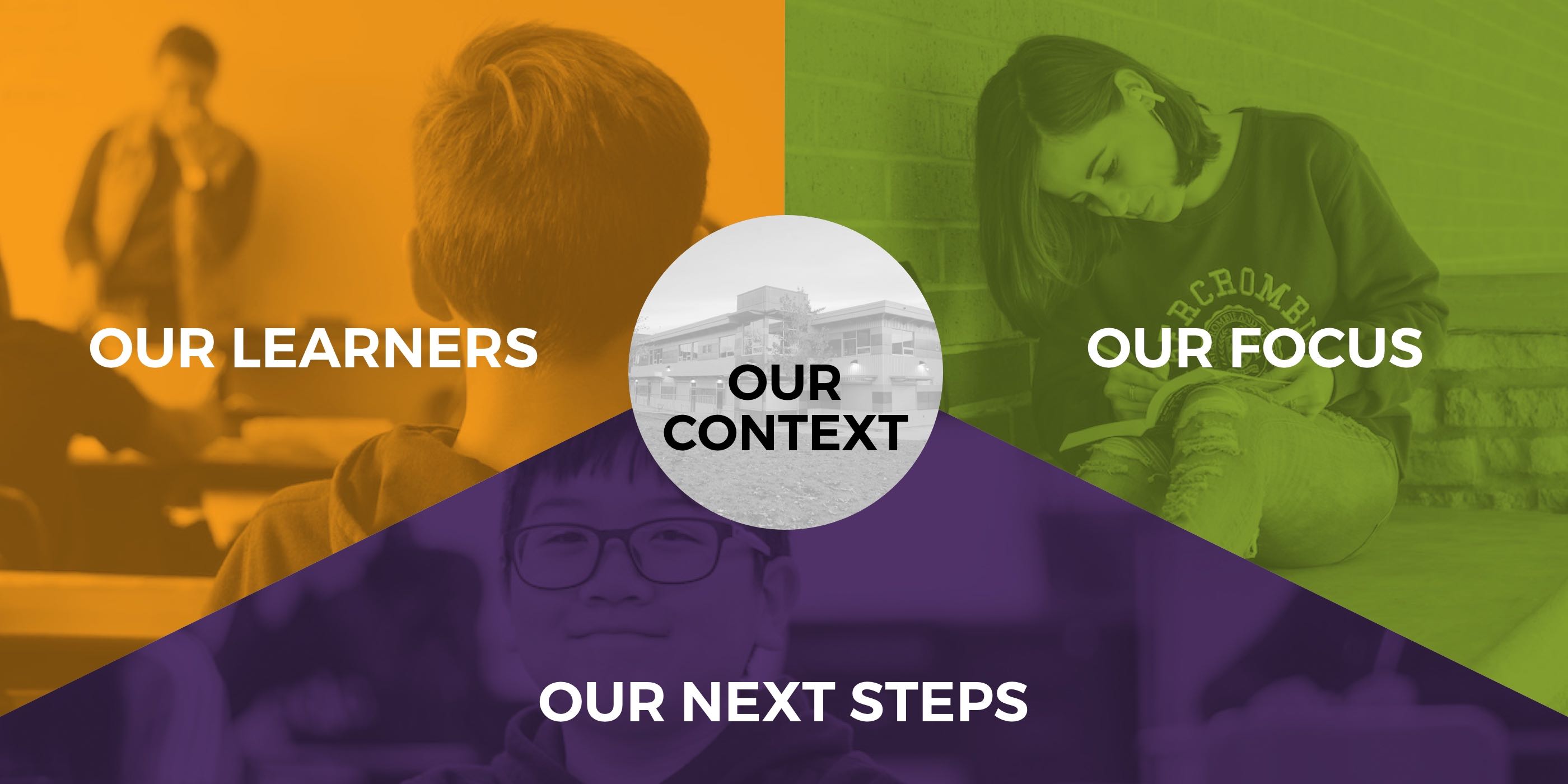

OUR CONTEXT
OUR LEARNERS
Our students can communicate purposefully, using formulas and strategies they have practiced.
When given effective tools and vocabulary, our students can communicate their thinking using appropriate mathematical terms. Using strategies modelled to them in class, students are able to work independently and in groups to show their learning. Using purposeful communication during numeracy learning time is one step towards becoming a mathematician!
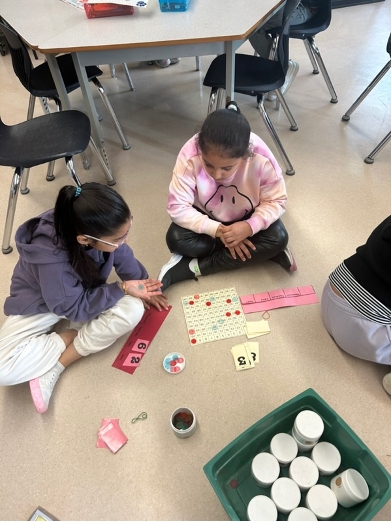
In this image, students are sharing their thinking while playing a math game. Using three different tools and strategies to share their understanding, students are problem solving together and showing their learning in three different ways.
Our students can contribute their thoughts and ideas during group activities with peers and share roles and responsibilities to achieve goals.
When participating in numeracy talks, students are able to share ideas and actively participate in learning discussions. During these discussions, students are both sharing their own ideas while considering the ideas of others. Students develop their critical and creative thinking skills through speaking, listening, and reflecting. In small group activities, students learn to respect the roles of their peers and allow each member to have a voice in the learning. Students understand the value and power of each voice in group settings.
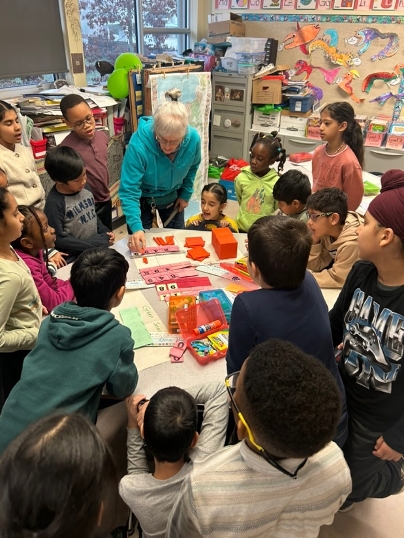 In the image above, students are debriefing a math problem as a whole class. With the teacher modelling their thinking, students are offering their thoughts and opinions and different ways to solve a similar math word problem.
In the image above, students are debriefing a math problem as a whole class. With the teacher modelling their thinking, students are offering their thoughts and opinions and different ways to solve a similar math word problem.
Our students can explore new materials and tools to develop their thinking and learning.
Student learn best when given different ways of learning the same concept. In numeracy, this happens with both hands on and paper based learning. When introducing new concepts in numeracy, students are often given different manipulatives to use as tools to help develop their understanding of a concept. Through hands on experiences, students are able to transfer their learning to paper pencil work as well as deeper learning conversation. The manipulatives and strategies used offer students real life learning opportunities and a chance to use tangible tools to connect their understanding to real world topics.
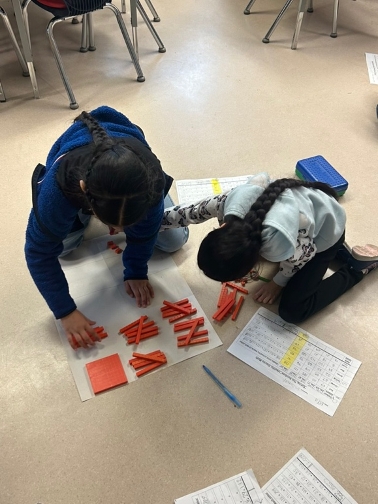 In the image above, students are using base ten materials to solve a real world math problem. Using these blocks, students come to understand how ten orange rods can be exchanged for a one hundred square. Being able to have this visual helps to develop a deeper understanding of making 10’s and making 100’s conceptually.
In the image above, students are using base ten materials to solve a real world math problem. Using these blocks, students come to understand how ten orange rods can be exchanged for a one hundred square. Being able to have this visual helps to develop a deeper understanding of making 10’s and making 100’s conceptually.
Our student can think “outside the box” to create innovative ideas and persevere to bring these ideas to reality.
Word problems are always interesting and challenging tasks for our students! When solving word problems, students use all of their core competency tools to access information and develop new understanding. Students are asked to collaborate with others, think creatively and critically, and communicate their learning in multiple ways. Often, word problems challenge our learners to move beyond the scope of using a single strategy to solve a problem and instead ask them to call upon various skills learned. Students also develop an understanding that their mistakes in learning are valuable in eventually leading to their final product.
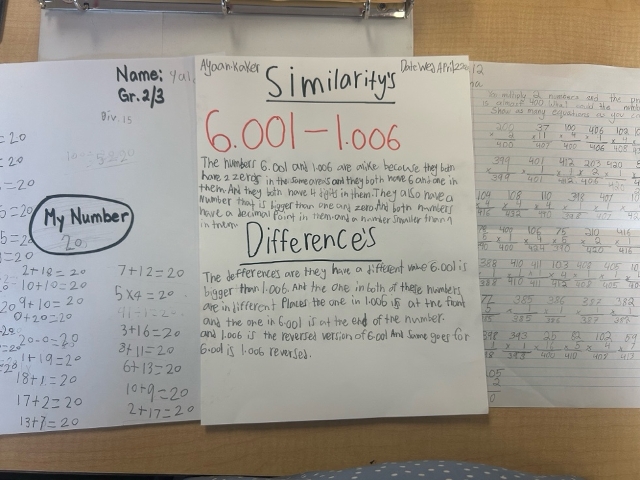
In the image above, students of various grade levels have shared their response to our school math challenge. Through their responses, we are able to see the difference in how students choose to communicate their understand and learning in numeracy.
OUR FOCUS
A Window into Numeracy at T.E. Scott
Students develop their numeracy skills through listening and practice: hands on learning, modelled structures and strategies, and paper based activities. We strive to ensure that students develop mathematical understanding, fluency, reasoning, and problem solving. We know that math is all around us! The foundational skills we learn at school help us in our daily lives whether we are shopping at the grocery store or determining the best route to get from point A to point B. As students progress in their knowledge of mathematical skills, we move from having teachers instruct and model understanding to having students apply their knowledge to solve equations.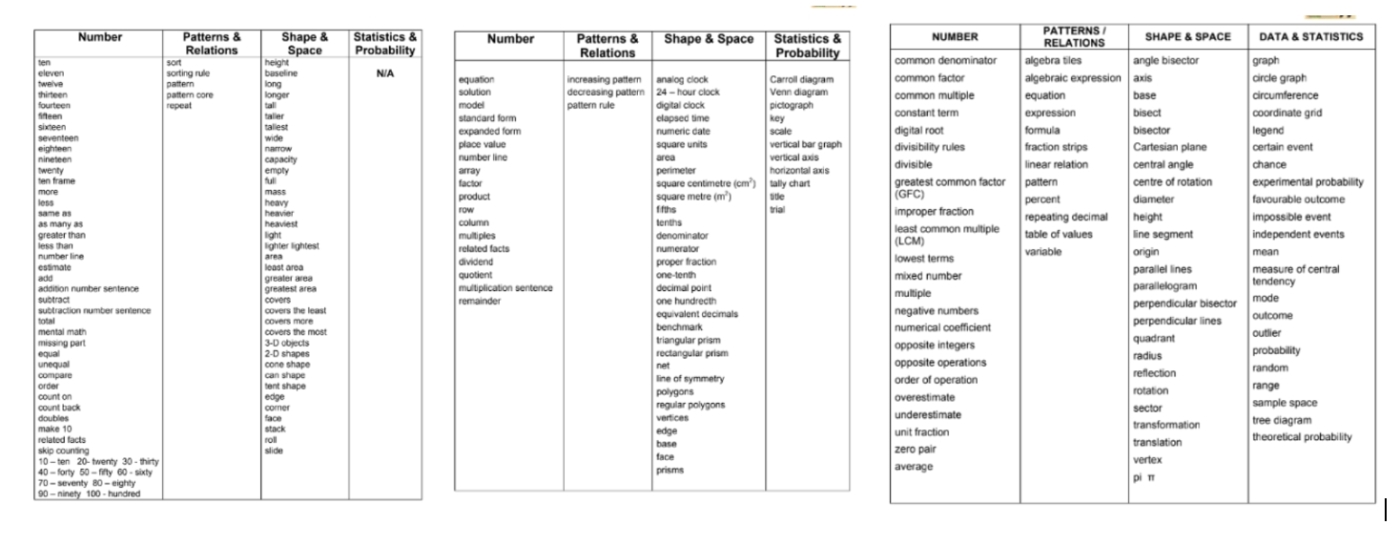 This image represents the vocabulary explored during the school year to improve student communication. Using a Surrey Schools resource, the vocabulary represents common terms used in Grade 1, Grade 4, and Grade 7
This image represents the vocabulary explored during the school year to improve student communication. Using a Surrey Schools resource, the vocabulary represents common terms used in Grade 1, Grade 4, and Grade 7
During the 2024-2025 school year, we explored how increasing student knowledge of math vocabulary could help them to develop a deeper understanding of the concepts explored in each grade. Working with a small cohort of students from Kindergarten to grade 7, students were given the opportunity to demonstrate growth of their vocabulary skills and use this vocabulary effectively to explain their thinking.
• Use mathematical vocabulary and language to contribute to mathematical discussions
- Explain and justify mathematical ideas and decisions
Building mathematical vocabulary is a foundational skill that contributes to a deeper understanding of numeracy concepts. When learning, students are asked to discuss their learning with each other, the whole class, and their teachers. Using the appropriate vocabulary demonstrates a foundational knowledge base that will continue to grow as students develop more mathematical skills.
- Student can use new vocabulary words when discussing math topics
- Students can describe the meaning of a vocabulary word
- Students can use vocabulary to explain their mathematical thinking and reasoning
OUR NEXT STEPS
Looking at our Results
In January, we worked with a small cohort of students from various grade levels who were asked to share their understanding of math vocabulary. Using a district supported document of common math vocabulary, students were asked to share the meaning of the words and how it was linked to their understanding of numeracy learning. In June, students were re-assessed on any vocabulary words they did not know or understand January. This comparative data has allowed us to assess our learners growth in vocabulary development during the school year.
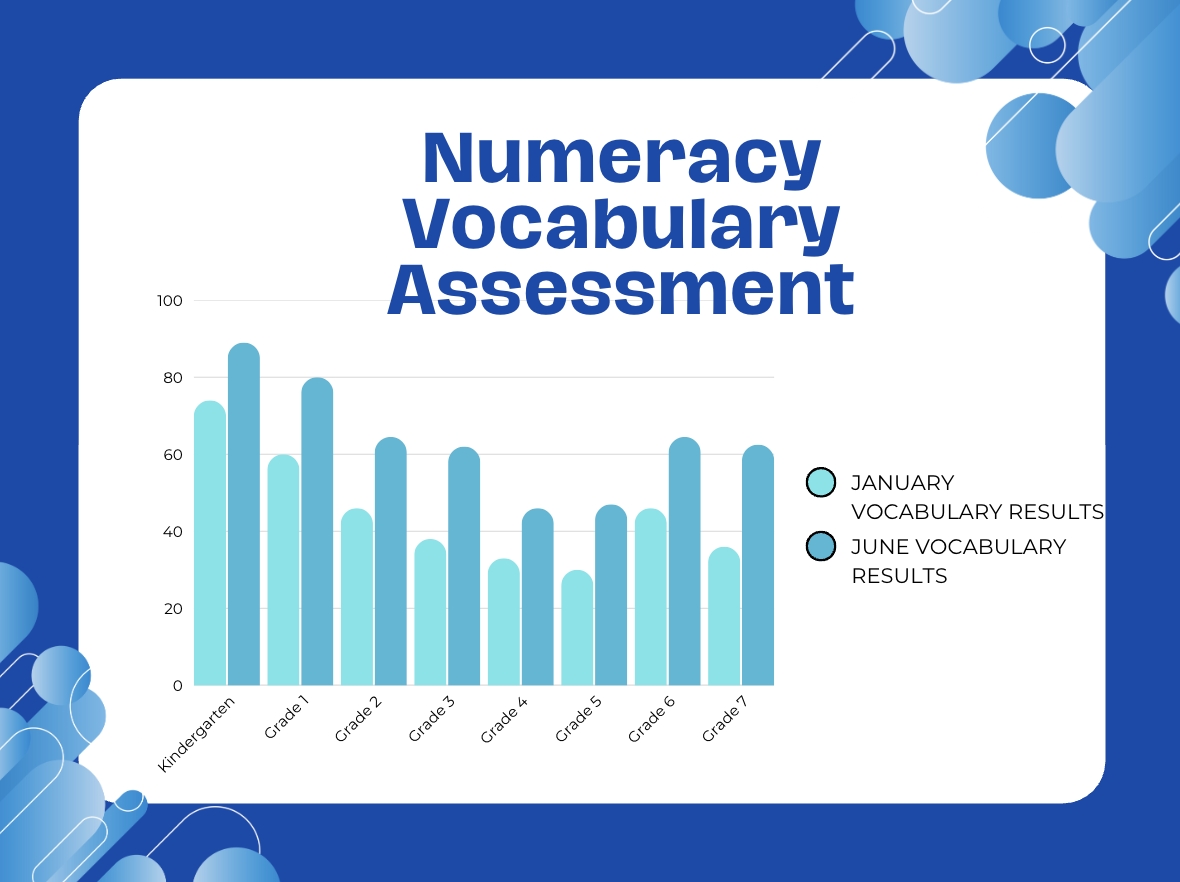
Interpreting Our Data
Throughout the school year, our cohort focused on on grade level vocabulary. Teachers used both visuals and explicit teaching to share numeracy vocabulary. In our data, we noticed strong growth in most grade levels with the biggest range of growth in our grade 1 and grade 7 years. When reassessing these students, they had a deeper understanding of the numeracy concepts being discussed. Below are some comments made by students in our small cohort:
Caleb- Kindergarten
"It is fun learning about numbers. The words help us to know what to say."
Sehar- Grade 6
"The math words are really challenging. Like, I know it when I see it but when you ask me the words right now, I don't remember."
Mehnaaz- Grade 2
"We use the words to help us talk about math but sometimes it is a little hard. I really liked learning about the shape words. I learned a lot."
Where we noticed the most limited growth in our vocabulary growth was in the mid-range of grade 4-5. When discussing with these students, they shared that they thought it was due to being introduced to new and more challenging topics in these grade levels. Although there was some growth in the mid-year ranges, we have noticed that there needs to be a concentrated focus on developing the vocabulary skills at these grade levels.
Moving Forward with our Learning
Based on our learning goals as a school community and the interpretation of data from assessments completed by our grade group cohorts, we have identified the following areas to continue learning growth amongst our students:
- Continue practice of a explicit teaching of numeracy vocabulary at all grade levels
- Exploring strategies to support the increased amount of challenging vocabulary in the mid-year grade groups (Grade 4 and 5)
- Identify the impact of learning vocabulary on being better able to explain our thinking in math
